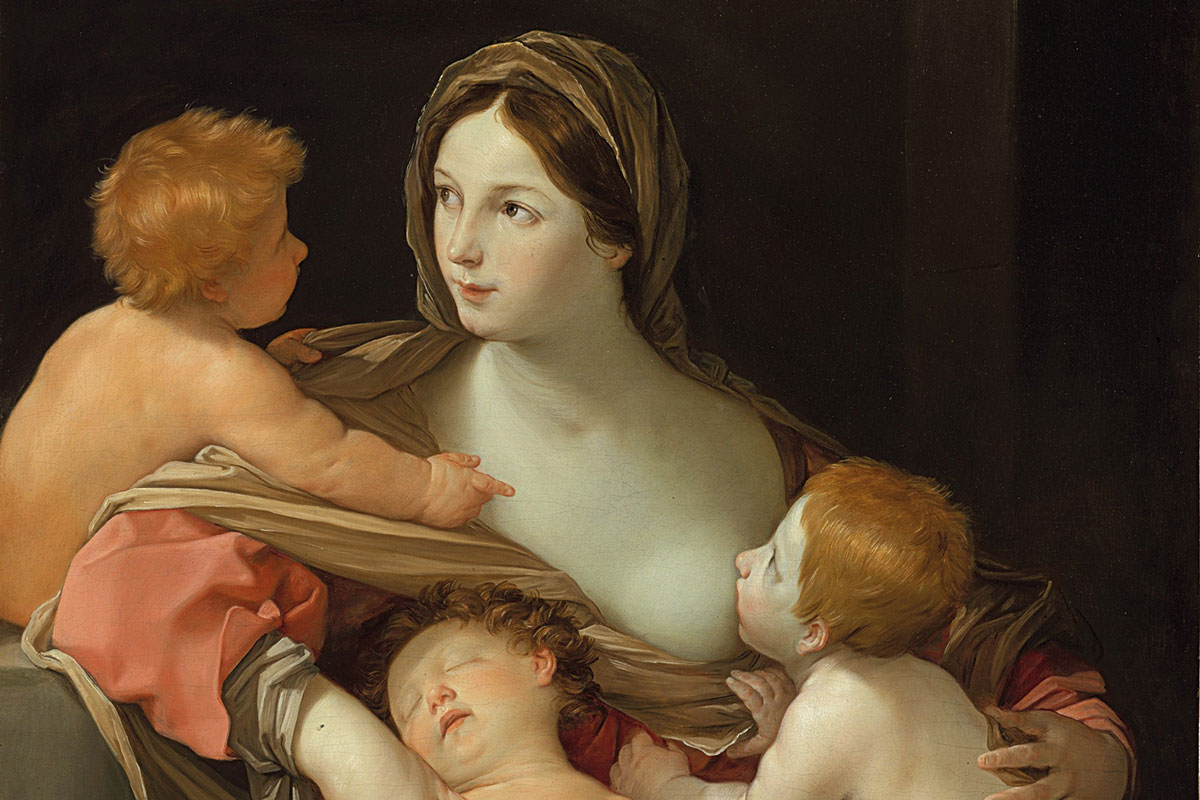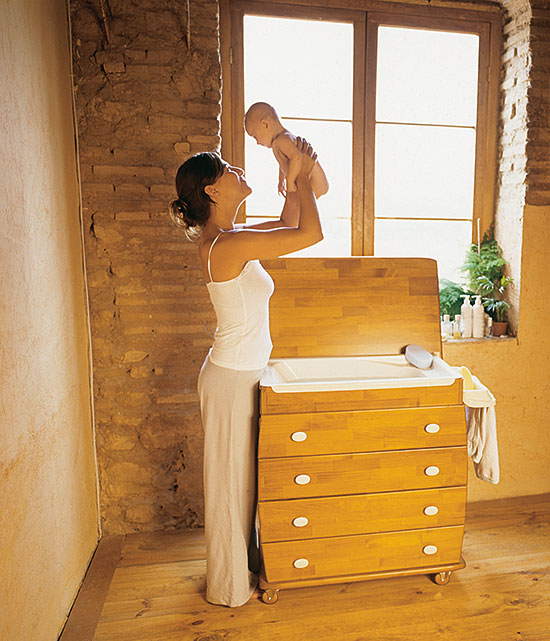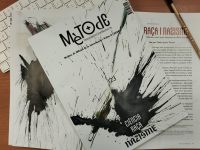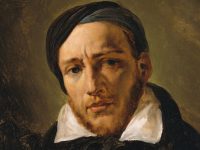
ABSTRACT
Scientific and, particularly, medical discourses have played a key role in the creation and dissemination of the standard model of motherhood envisaged as a vocation in itself, an exclusive task, women’s natural destiny and their self-realisation. Here we explore the origins of this social model in eighteenth century fiction and popular medical literature.
Keywords: Maternity, modern family, medical discourse, history of science.
From the prints illustrating the sentimental eighteenth-century novels with scenes of domestic bliss, to the barrage of current advertising, depiction of the mother figure and her unique and close relationship with children has been powerful and omnipresent in social imaginary. The great weight of this image of motherhood as a monopolising vocation, exclusive task, natural destiny and full self-realisation of women has often led to the assumption that it is a natural and immutable reality. However, to understand motherhood in the full complexity of its expressions, as a social function as well as a constituent element of individual identities (male and female), we must set aside essentialism and approach it as a reality midway between nature and culture, in which institutions, symbolic order and subjectivity are all interwoven (Lozano Estivalis, 2007 and 2009; Tubert, 1996). In fact, the image of the self-sacrificing mother who is utterly devoted –both physically and emotionally– to the care of her children is a relatively recent archetype in historical terms. This representation forms part of the construction of the modern western family, bringing with it new models of femininity and masculinity, new values of married life and parent-child relationships, as well as a new notion of the relationship between public and private orders which differed to that existing in traditional European societies (Badinter, 1991; Bolufer, 2008; Knibiehler and Fouquet, 1981). And even when this became the ideologically predominant model (from the late eighteenth century and, largely, up until our 21st century), it is a symbolic representation and, as such, false standardisation, never fully reflecting real ways of life, which are much more diverse.
«The great influence wielded by the image of motherhood as an all-absorbing vocation frequently led people to believe it a natural and immutable reality»
A key role has been played by scientific and, in particular, medical discourse in the creation of this image and its dissemination as the norm, since the eighteenth century. And this, at the mercy of its growing reputation as knowledge that was constructed –with the epistemological revolution of modernity– in a discourse authorised to have the appearance of truth, appealing to «nature» as supposedly unquestionable evidence, and wielding its power to interpret it. Medical concepts, theories and ideas largely contribute to the moral, social and religious values of their time, their dissemination impregnating the collective mindset and conditioning individual perceptions. In this sense, men of science have repeatedly questioned, among other things, the significance of the difference in the sexes, projecting the conventions, expectations and prejudices of the society to which they belonged onto their questions and answers, onto their research approaches and results and their scientific practices (Bolufer, 1999; Laqueur, 1994).
Doctors: apostles and interpreters of (female) nature)
Since the eighteenth century, in particular, medicine has played a key role in the construction of social norms and patterns of behaviour and subjectivity. The social and intellectual authority of doctors helped build the new model of sex distinctions corresponding to modernity: the essentialist paradigm or paradigm of «incommensurable difference» (as Laqueur called it, 1994). This was in contrast to Aristotelian philosophy and Christian treatise which presented masculinity and femininity in purely hierarchical terms, or Galenic medicine which explained them as the result of different degrees of basic qualities, due to greater or lesser moistness and temperature, which determined a different combination of humours, (MacLean, 1983). The new paradigm, which acquired momentum in the eighteenth century, was in conflict with these hierarchical models as well as with the rational concept of equality of the two sexes that some authors, such as Poulain de la Barre, had championed since the previous century, placing emphasis instead on the idea of complementarity, and understanding masculinity and femininity as radically different essences, both in the physical and moral facets, with the «nature» of each sex mirroring their respective social functions. Functions identified with women were related to morals, customs and family, especially motherhood, while for men they corresponded to the public sphere of politics, intellectual life or trade.
«In the 18th century, the behaviours believed to ensure better physical and moral wellbeing of women coincided with those considered conducive to propagation of the species in an era seeking demographic growth»
While this is indeed deterministic thinking, it is an unequal determinism, in which the body and its gender influence women more tightly than men, in as much as women more than men are narrowly and directly defined, with the biological understood as fate. The philosopher Jean-Jacques Rousseau, who was well aware of the medical literature of his time, a friend of important doctors (like the Swiss physician Simon-André Tissot) and an influential and frequently cited writer himself (by doctors themselves, among others), was to express this idea as clearly as he did harshly in his popular work Emile, or On education (1762): «The male is only a male in certain instances; the female is female all her life or at least all her youth. Everything reminds her of her sex». Rousseau follows on from this statement with «and to fulfil well her functions she needs a constitution that relates to them». By «constitution» we understand education (physical, moral and emotional) that should be shaped, and which he ambiguously presents as either a reflection or keystone of nature.»
So it is, eighteenth-century doctors made an outstanding contribution to developing this «constitution», trying to follow «nature» as a guiding principle and normative concept. Needless to say –in accordance with their status as men of science– believing themselves able to «reveal» the principles of nature, what they actually did was to construct them and, through their writings giving health advice, advocated «natural» and healthy behaviours. These treatises coincided with the new enlightened and bourgeois social patterns, reflecting utility, order and respectability. Science and morality, or in the words of Tissot, «science of health» and «science of morals or customs» were presented as two sides of the same coin (Bolufer, 2000). And this belief led doctors to lay claims to becoming moralists, set to guide private behaviour and become government advisors to design what was –at the time– called «police» or public policy.
The growing influence that physicians held over society was wielded through a wide range of popular literature: books on hygiene, dealing with «governance of health», «household medicine», «conservation or physical education of children». A set of texts and messages that went beyond specialised production targeting physicians themselves, but was projected in the popular press, moral and pedagogical literature and even fiction, thus reaching the broadest and most diverse audience. Books by physicians as influential and widely read at the time as Tissot, who enjoyed great popularity among a select aristocratic and bourgeois clientele and wrote educational books (Avis au peuple sur sa santé, 1761), or by the Scottish physician William Buchan (Domestic medicine, 1769; Advice to mothers on the subject of their own health and on the best means of promoting the health, strength and beauty of their offspring, 1803) ran to numerous editions in their languages of origin and were translated into several other languages, enjoying success in many countries. They gave «counsels for health» providing advice and warnings, advocating lifestyles that simultaneously assumed and fashioned differences in status and in sex. These handbooks centred the life of the working classes around work, that of the well-to-do around exercising their professions and positions, with moderation of leisure, while for women of the same social environment the main axis is motherhood (training, taking care of their own health in order to become mothers and look after their children’s health); meanwhile little was written on the maternity of working women, for whom the model would have been difficult to apply.
For women, then, popular literature would persistently associate their own body to the social body (Bolufer, 1999), so that the care of their own health seemed to be a responsibility towards society. Behaviours expounded to ensure better physical and moral wellbeing of women coincided, almost providentially, with those considered conducive to propagation of the species in an era of natalism, when demographic growth was believed to guarantee economic well-being and provide war potential; so too with social reformism, which advocated the value of physical and moral principles as a new distinguishing feature of the bourgeois, rather than the aristocratic values of blood. Thus, in different ways, medical discourse powerfully contributed to creating a new sense of family responsibility in the construction of social and moral order. What is more, it did so by stressing –specifically– the moral and hygienic obligations of mothers, whom doctors addressed with particular insistence, exalting the importance of their domestic role and attempting –via their mediation– to intervene in the households of urban elites in the eighteenth century, and –with the development of social medicine in the nineteenth century– in those of the nascent industrial proletariat. The main message is clear: even though women’s nature tends towards motherhood, they cannot rely on their instincts, but need doctors’ guidance to interpret and follow these «natural» directions, relinquishing the wisdom and practices of caring for self and for children handed down by tradition and practiced by empirically-trained female professionals, namely midwives and healers.

Maternity is usually represented as the quintessence of femininity, the most pleasant activity for women, who are constantly encouraged to embrace the joys of motherhood. / Ana Ponce & Ivo Rovira
Maternal suckling: a new mystique of motherhood
This new model represented a significant break with the prevailing social customs and values of the past, still largely in force in the eighteenth century and that did not disappear without resistance. In pre-industrial societies, although caring for children was assumed to be a woman’s task, it was not expected to fall exclusively on the mother herself. In the case of the working classes, both rural and urban (representing the vast majority of the European population), in which women’s work was a daily reality, neighbours and relatives helped to take care of children, while the more well-to-do resorted to wet nurses and nannies. Indeed, in the sixteenth and seventeenth centuries, doctors themselves naturally assumed that as women were forced to combine childcare with other social functions (work for the majority and social commitments or courtly duties for a select minority), breastfeeding, for example, was not performed by the mother herself in most cases. In this respect, they intended their expert advice to be followed to select the best possible wet nurse (as in the book by the physician Juan Gutiérrez Godoy, despite its somewhat misleading title: Tres discursos para provar que están obligadas a criar sus hijos a sus pechos todas las madres, quando tienen buena salud, fuerças y buen temperamento, buena leche y suficiente para alimentarlos, 1629 [Three Discourses to Prove that all Mothers are Obliged to Suckle their Children upon the Breast when They are Healthy and Strong and Have a Good Temperament and Sufficient Good Milk to Feed Them]).
«The image of the breastfeeding mother was to become the utmost representation of sentimental and selfless femininity in the eighteenth and nineteenth centuries»
Indeed, the main novelty of the model family of the Enlightenment, emphasising the affections, was the central role assigned to the woman as a mother (more so than as a wife), and the extremely demanding, non-transferable and what could be called maximalist way, in which her duties were defined. This model now envisaged the physical nurture and moral and affective upbringing of children as an exclusive and engrossing occupation to which the mother must personally devote herself in body and soul. Indeed, mothers who failed to do so were seen as «unnatural» women, deaf to «nature’s voice» calling from within; a metaphor commonly employed both in medical texts and novels. And all this happened because motherhood became known (according to philosophers like Rousseau, and ratified by doctors like Tissot, or to a degree by Buchan) as a woman’s natural fate, the axis determining all her bodily traits and the ultimate reason for her peculiar moral nature, making her sensitive, compassionate and devoted (in other words, apt to give up everything for the welfare of others, and especially for the sake of her children). Motherhood was also portrayed as a social and civic mission with far-reaching public consequences, because the mother, it argued, is the cornerstone of the new affective and moral family, and is thus responsible for the moral and political education of future citizens. Furthermore, in this model, motherhood is represented as the essence of feminine subjectivity, the most pleasurable occupation for women, who are encouraged to find unutterable satisfaction in the sweet pleasures of maternal love, made legendry by period literature with lashings of lyricism. This «loving tenderness and gentle inclination causing the good mother’s heart to overflow with joy», as the French physician Pierre Landais put it in his Dissertation sur les avantages de l’allaitement des enfans par leurs mères (1781), must compensate women for all the sacrifices made for the sake of their children and wholly meet their emotional needs. Thus for women, motherhood should be the object of all their desire, the home to all their pleasures and the basis of their moral power.
«Men of science have projected the conventions, expectations and prejudices of the society to which they belonged, onto their research approaches and scientific practice»
This message was reiterated from the mid eighteenth century onward in moral, educational, medical and political writings. In particular, breastfeeding starts to be portrayed as a vital responsibility, obligatory under any circumstances, even the most extreme. Consequently, doctors and moralists harshly criticise women who fail to comply and make use of «mercenary breastfeeding» instead. This deeply derogatory term («mercenary» is the wet nurse who sells her milk, like the prostitute sells sex, alienating a body which should provide pleasure exclusively to child or husband) clearly expresses the rejection of what continued to be a widespread practice, namely, resorting to wet nurses (not solely, or not so much, as an individual decision taken by the mother, but rather as a cultural value and social and family approach). The work by Jaume Bonells (doctor of the Casa de Alba and member of the Academia Médica Matritense and the Practical-Medicine Academy of Barcelona) is a good example of this extreme hostility, quite in contrast to the more flexible approach taken by physicians in previous centuries. His book, suitably entitled Perjuicios que acarrean al género humano y al Estado las madres que rehusan criar a sus hijos (The Harm Done to Society and the State by Mothers who Refuse to Suckle their Children, 1786) endeavours to convince readers of the terrible evils that will befall the health of mothers and children due to the use of wet nurses and the great personal and collective, moral, social and political benefits of maternal breastfeeding.
This model was also spread by the particular success of sentimental novels and theatre plays, with bestsellers like Pamela Andrews (1740) by the English writer Samuel Richardson, or Julie, ou la Nouvelle Héloïse (1761) by Rousseau himself. Such popular writings featured virtuous maidens, who were to find fulfilment as wives and mothers, wholly engrossed in the care of their children, and even –in accordance with the hygiene norms of the time and against the prevailing customs– breastfed them and provided physical care. What is more, illustrated and romantic iconography provided rich images of the loving and devoted mother, often represented by the figure of a mother breastfeeding, widespread allegory of childcare, or in its heroic version portraying the mother who sacrifices her life for her children (like Rousseau’s Julie). Thus, this image of the breastfeeding mother was to become the utmost representation of sentimental and selfless femininity in the eighteenth and nineteenth centuries.
This new ideal with pretensions of universality did not displace either immediately or completely the former family practices and representations, although it was to exert a profound influence on social imagination. The strong demands imposed by this ideal encountered resistance from the well-to-do, whose lifestyles and values did not coincide, nor was it to find a place in the reality of working-class women labourers. Some intellectuals of the time (from Josefa Amar to Mary Wollstonecraft or Madame de Staël) captured and reported its biased and coercive nature, which made much greater demands on mothers than on fathers, not to mention the strong subjectivity of the scientists who advocated it. However, broad sectors of society felt identified with this model, especially the middle classes, in as much as it offered them an image of moral superiority and promised women a certain symbolic, moral and affective power. The maternal-filial relationship is represented as a kind of debt, based on the mother’s utter devotion, which is impossible to repay. In this respect, the new family constellation, particularly the powerful symbolism bestowed upon the maternal-filial bond and the perception of maternity as a gift in itself, was to establish a pattern of relationships and subjectivities exerting a profound influence on the feelings and ways of life (male and female) engendered by the modern family, and where the psychological structures explored by Freudian theories are deeply rooted.
Regarding this topic –as in many others subject to debate, controversy and conflict in modern societies– history (including the history of science) is unable to supply formulas, solutions or predictions. However, it does teach us an important lesson in reminding us that motherhood is not something purely natural, determined by an unchanging and immobile human nature, but rather it is a social and cultural construct, it is ongoing and under construction: in the past, the present and the future.
References
Badinter, E., 1991. ¿Existe el instinto maternal?: historia del amor maternal, siglos xvii al xx. Paidós. Barcelona.
Badinter, E., 2011. La mujer y la madre. La Esfera de los Libros. Madrid.
Bolufer, M., 1992. «Actitudes y discursos sobre la maternidad en la España del siglo XVIII: la cuestión de la lactancia». Historia Social, 14: 3-22.
Bolufer, M., 1999. «Cos femení, cos social: Apunts d'historiografia sobre els sabers mèdics i la construcció cultural d'identitats sexuades (segles XVI-XIX)». Afers, 33/34: 309-328.
Bolufer, M., 2000. «"Ciencia de la salud" y "ciencia de las costumbres": higienismo y educación en el siglo XVIII». Áreas. Revista de Ciencias Sociales, 20: 25-50.
Bolufer, M., 2008. «Formas de ser madre: los modelos de maternidad y sus transformaciones (ss. XVI-XVIII)». In Méndez, J. (ed.). Maternidad, familia y trabajo: De la invisibilidad histórica de las mujeres a la igualdad contemporánea. Fundación Sánchez Albornoz. Àvila.
Bolufer, M., 2010. «Madres, maternidades: nuevas miradas desde la historiografia». In Franco, G. (ed.). Debates sobre la maternidad desde una perspectiva histórica (siglos XVI-XX). Icaria. Barcelona.
Knibiehler, Y., 2001. Historia de las madres y de la maternidad en Occidente. Nuevas Claves. Buenos Aires.
Knibiehler, Y. & C. Fouquet, 1981. Histoire des mères. Du Moyen Âge à nos jours. Montalba. Paris.
Laqueur, T., 1994. La construcción del sexo: Cuerpo y género de los griegos a Freud. Cátedra-University of Valencia. Madrid.
Lozano estivalis, M., 2007. La maternidad en escena: mujeres, reproducción y representación cultural. Prensas Universitarias. Zaragoza.
Lozano estivalis, M. (coord.), 2009. «Tot sobre la mare: maternitats, entre la ciència i la consciència». Mètode. Revista de difusió de la investigació de la Universitat de València, 62: 44-105.
MacLean, I., 1983. The Renaissance Notion of Woman: A Study in the Fortunes of Scholasticism and Medical Science in European Intellectual Life. Cambridge University Press. Cambridge.
Tubert, S. (ed.), 1996. Figuras de la madre. Cátedra-University of Valencia. Madrid.





